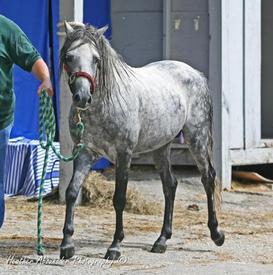
An equine of old with a history dating back millennium, the Caspian Horse hails from the mountainous region of Northern Iran. Here it existed as a semi-feral horse before being re-developed in the 20th century.
Much conjecture surrounds the origin of this breed, with one school of thought being that the Caspian descends from the similarly structured Mesopotamian horses that diminished during the 7th century AD. Another is that the Caspian contributed to the bloodlines of every horse in history, with archaeological evidence dating a lineage to 3400 BCE.
Whatever the truth, the Caspian was re-discovered in the 1960s (having been previously assumed extinct) by Louise Firouz, who began the careful process of renewing the breed at her Iranian riding school. The Caspian of today is well distributed around the world.
Despite being small, boasting an average height of 10-12 hands, the Caspian is a physically capable, well-built, well-balanced horse of rugged appearance that remains highly sought as a child’s riding and jumping horse today. Common in colours of bay, chestnut and grey, there is plenty besides size that characterises this breed.
It is said that the Caspian is the only horse that doesn’t need to be shod. Because of its strong soles that will have developed from living on Iran’s rough, mountainous landscape, the Caspian can exist quite well without shoeing.
Do you own a Caspian Horse? Let others know what they're like!
Related products
Advantage 80 Spot On Flea Control Large Cats and Rabbits
from £12.95
Advantage 40 Spot On Flea Control Cats, Small Dogs and Rabbits
from £12.95
Advantage 250 Spot On Flea Control Large Dog
from £12.95
Advantage 100 Spot On Flea Control Medium Dog
from £12.95
Drontal Tasty Bone Wormer Tablets for Small & Medium Dogs (2 to 20kg)
from £2.15
TermaWorm™ Tablets for Cats & Dogs
from £1.79
Drontal Tasty Bone XL Wormer Tablets for Large Dogs (Over 20kg)
from £6.39
Advantage 400 Spot On Flea Control Extra Large Dog
from £12.95